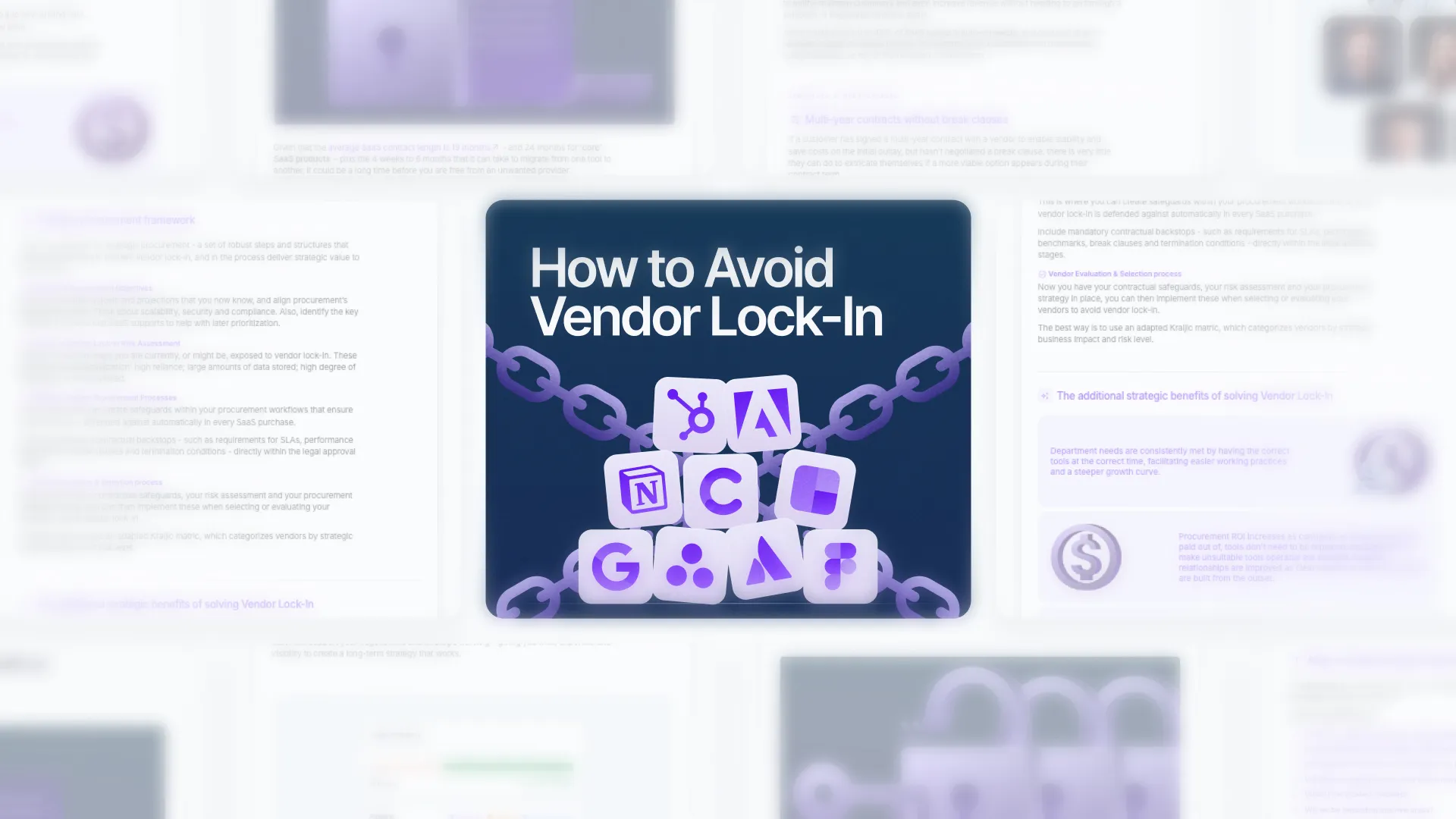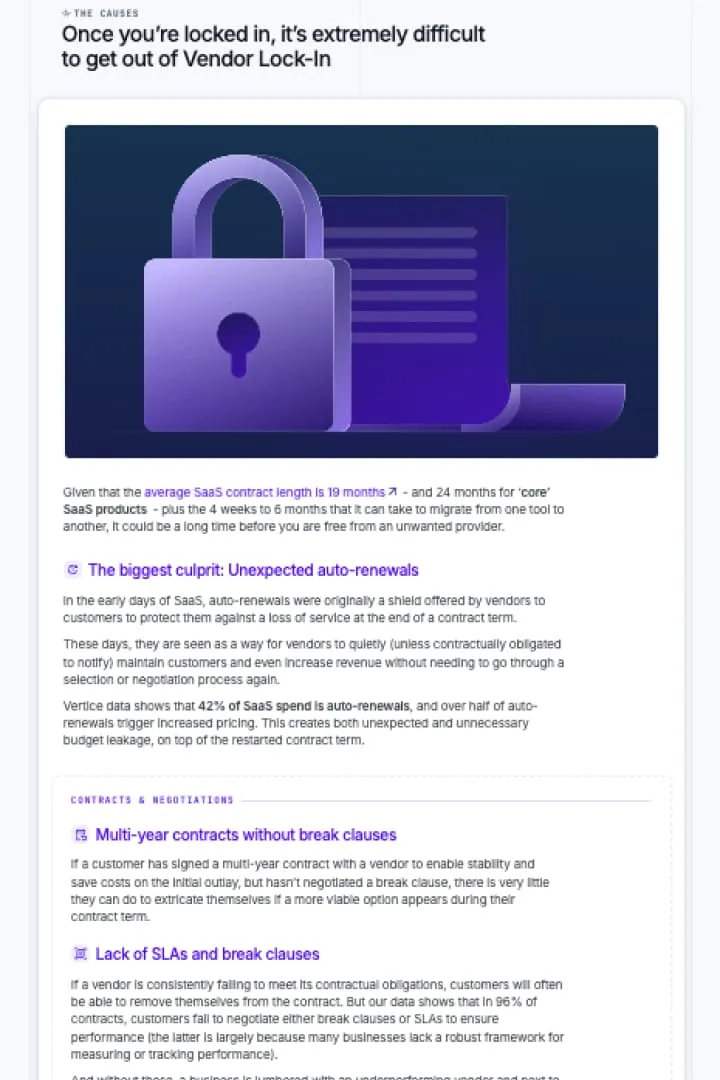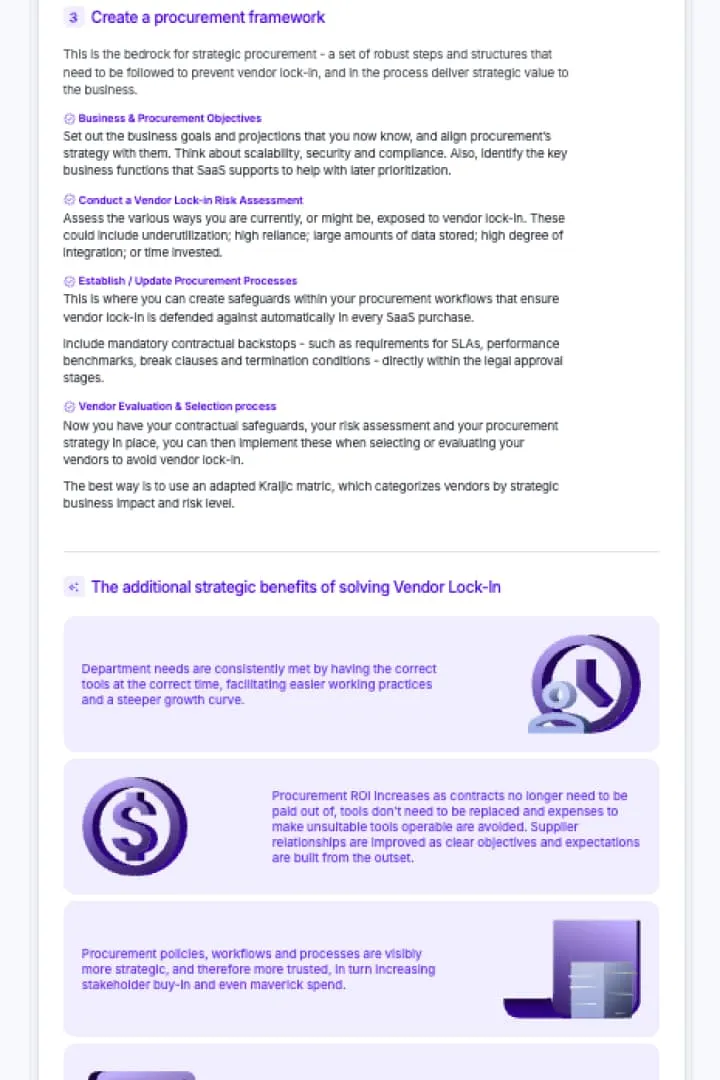


Proven strategies for avoiding vendor lock-in
87% of procurement leaders have experienced vendor lock-in – and it’s a problem threatening agility and cost-efficiency:
- The race for AI adoption is accelerating procurement decisions, often without assessing long-term supplier risk.
- New pricing models may look attractive, but often include hidden fees, restrictive terms, and limited exit options.
- Supplier lock-in can lead to inflated costs at renewal, as vendors aren’t faced with competitive pressure.
Supplier lock-in feeds on procurement departments that lack time, pricing intel, and SaaS visibility – all of which are crucial for mitigating these risks and avoiding vendor lock-in.


Supplier lock-in is driven by design – but it’s largely preventable
Knowing the warning signs of vendor lock-in is critical for avoiding long-term operational and financial consequences.
- Contracts that auto-renew without review or renegotiation.
- Contracts lacking break clauses, SLAs, and clear T&Cs.
- Limited procurement transparency, along with a lack of data ownership, portability, and access rights.
Recognizing these risk factors early puts you in control. By building flexibility into each and every software contract, and obtaining full oversight of your procurement processes, you can avoid supplier lock-in and maintain leverage in your negotiations.
The need-to-knows
Vendor lock-in is a detrimental scenario that occurs when customers wish to switch suppliers but are contractually bound to a vendor that doesn't adequately service their current or future business requirements. Switching mid-contract would be too challenging, expensive and impractical, and waiting to the contract's end would be a waste of budget.
Through a combination of insufficient forward planning, a lack of diligent negotiating, and poor data and tech stack visibility. It's not uncommon either, our research has shown that 87% of procurement leaders have experienced being stuck with a supplier they do now wish to use any further. Only a modern, robust procurement setup has the ability to actively prevent vendor lock-in, but only 17% companies have achieved this - almost the reverse of those who've experienced vendor lock-in.
It's a huge drain on a company's finances. In an age where financial efficiency is key, and competition is high, wasting money on underperforming technology holds businesses back - in both monetary and business growth terms. Plus, it highlights more underlying issues with procurement, such as untracked auto-renewals, a lack of data and tech stack visibility, and inefficient negotiation tactics.






























